
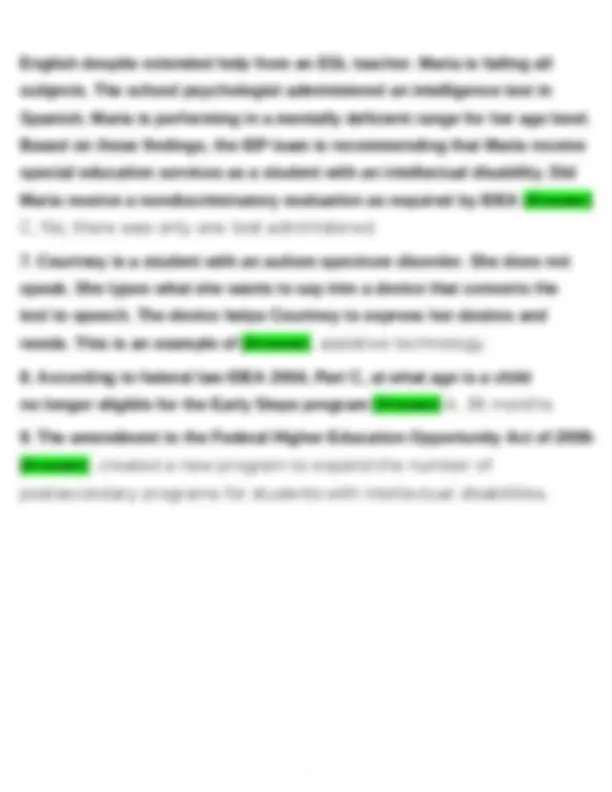
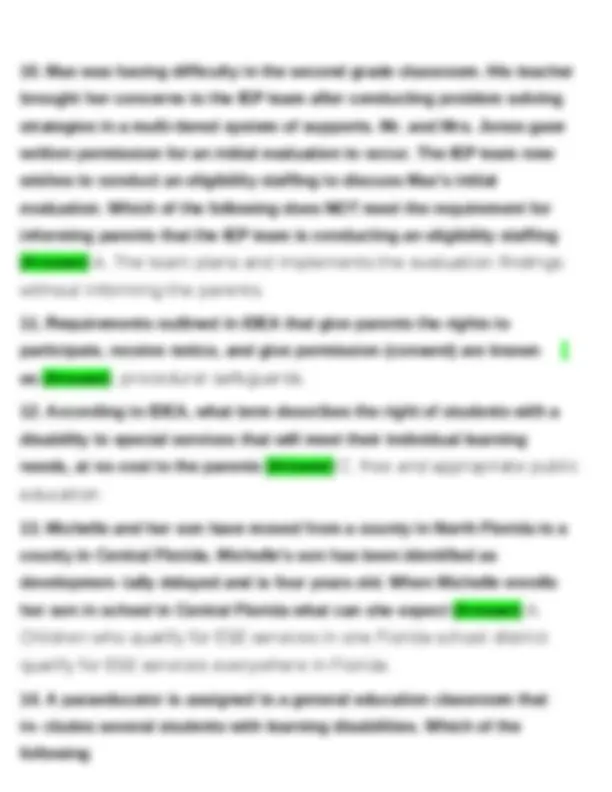
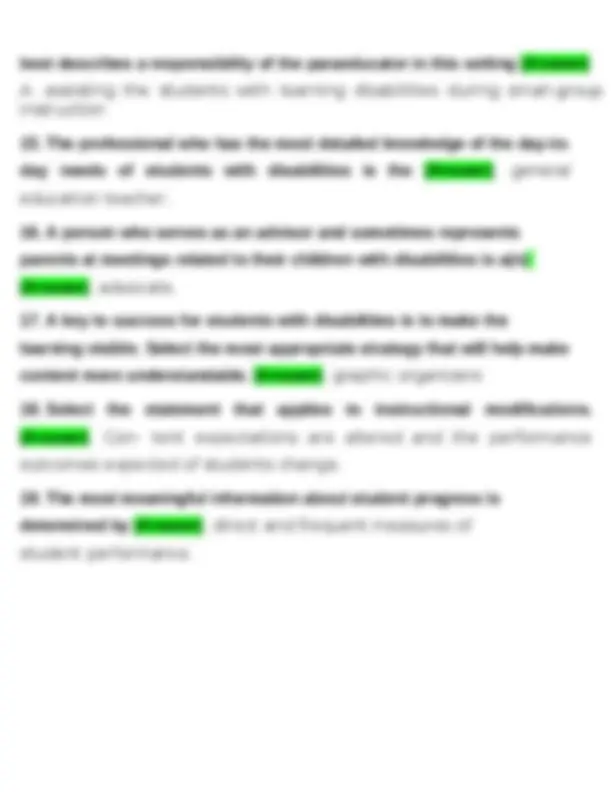
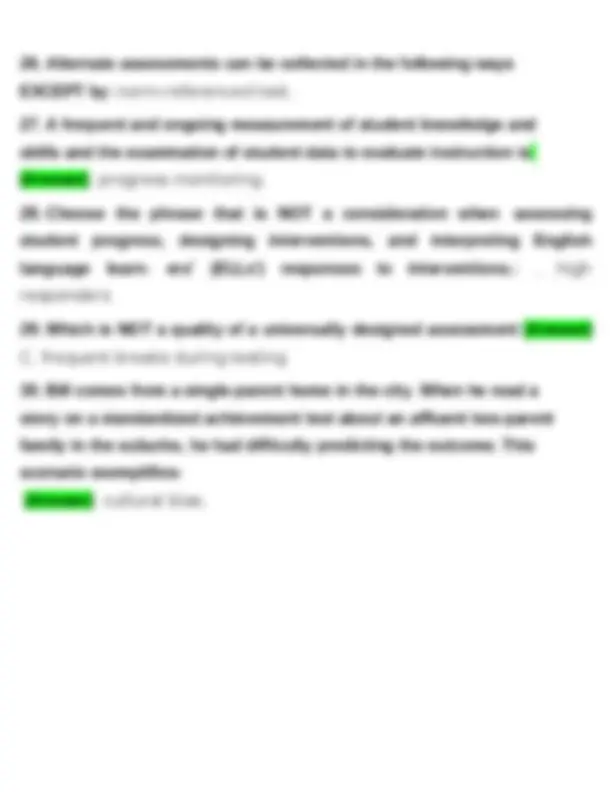
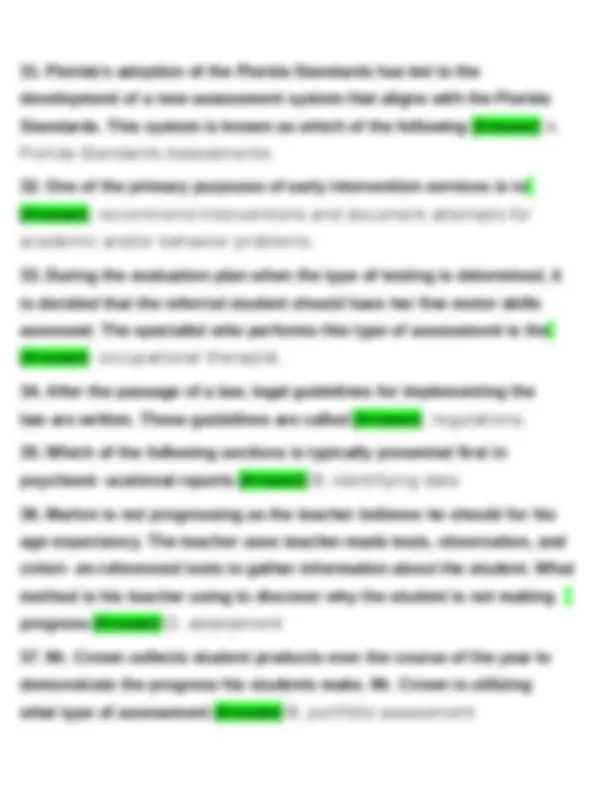
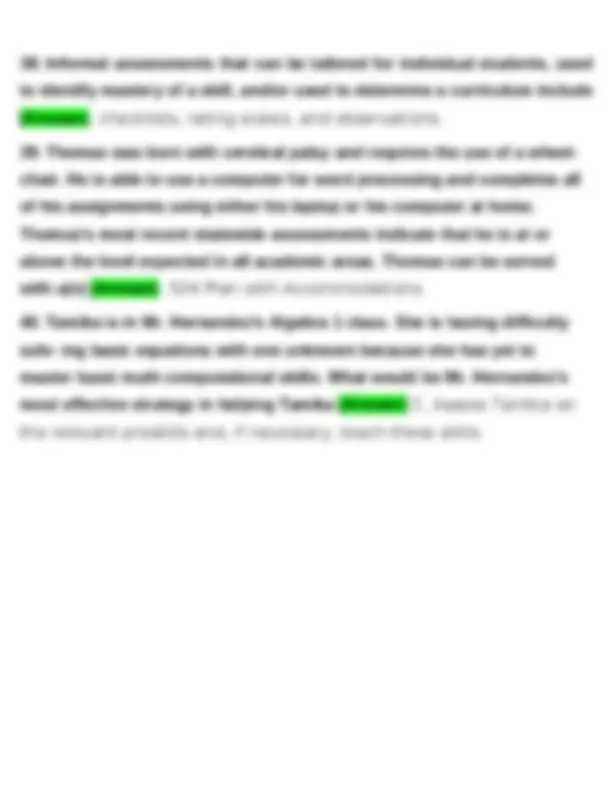
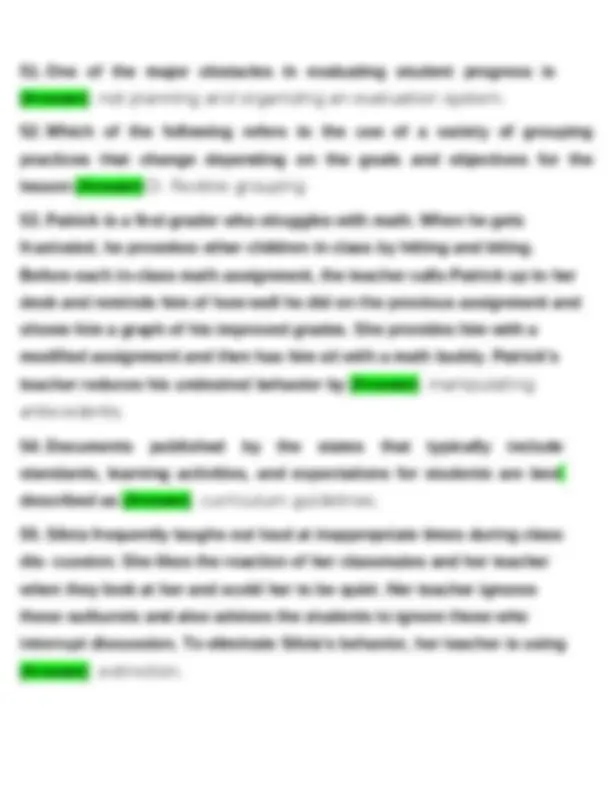
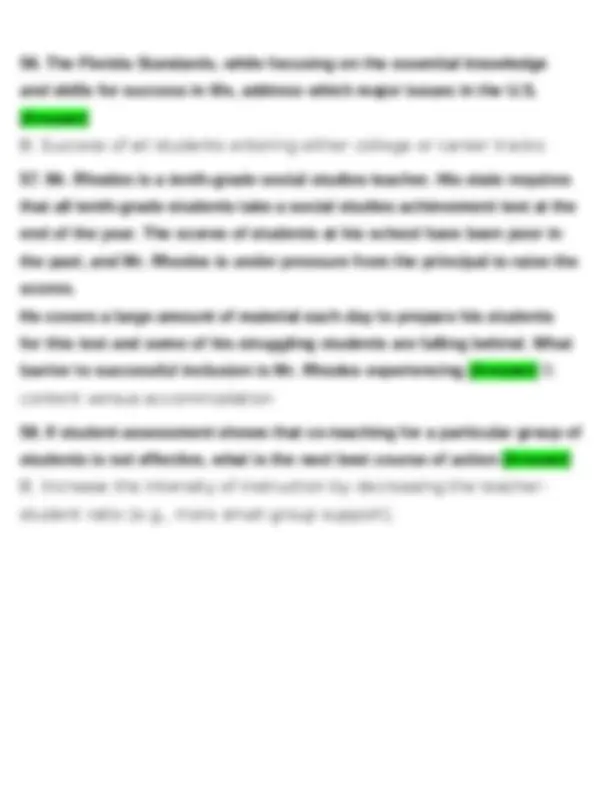
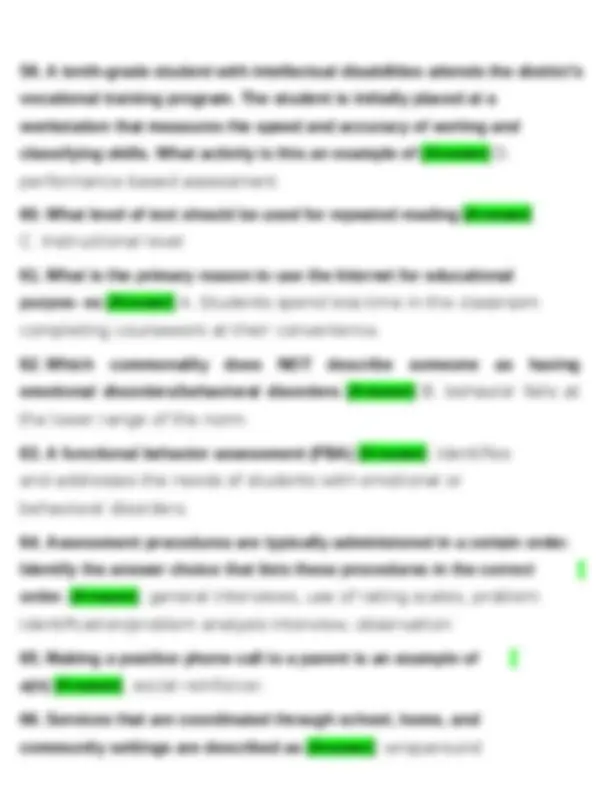
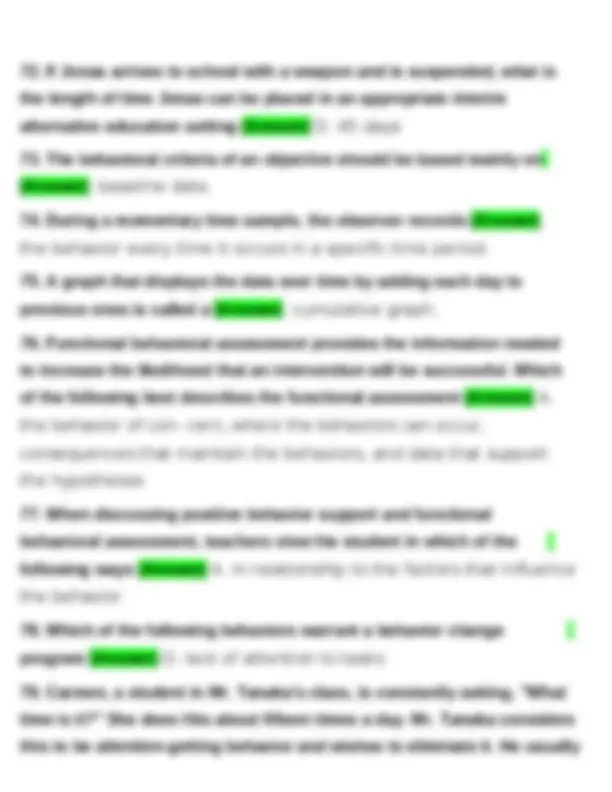

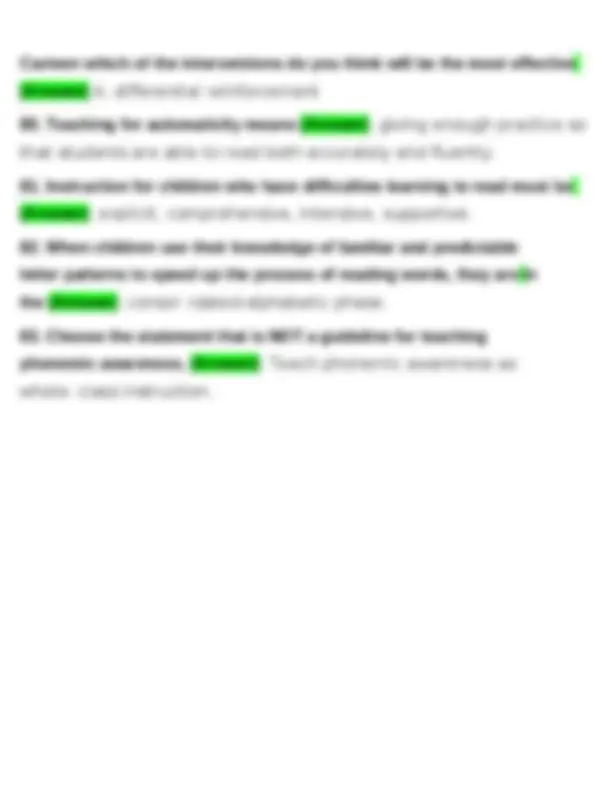
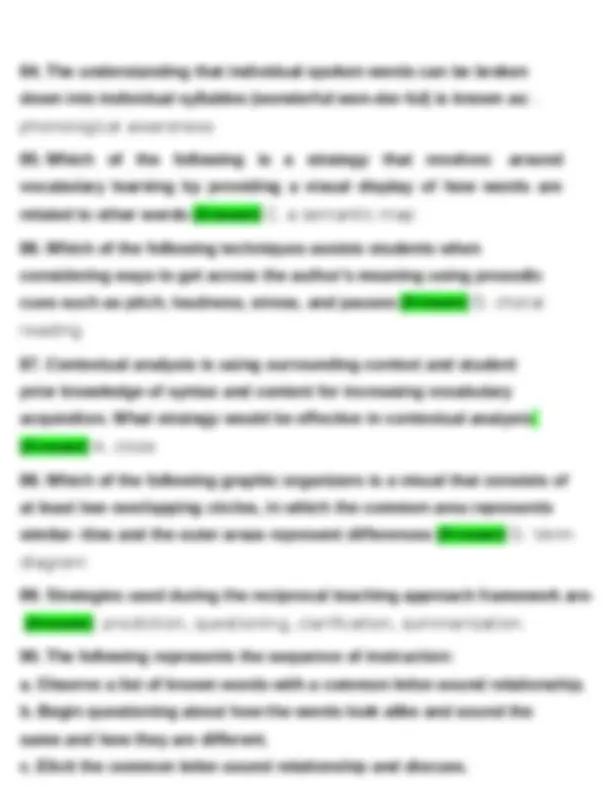
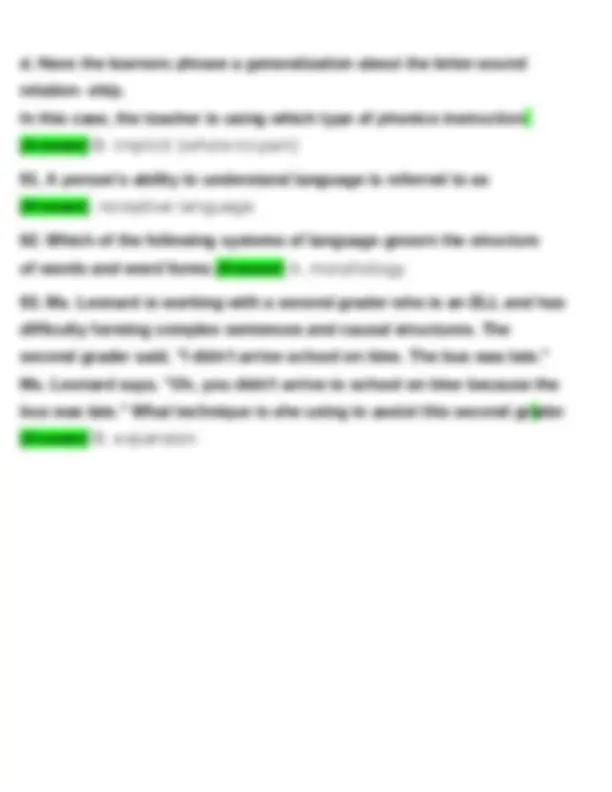
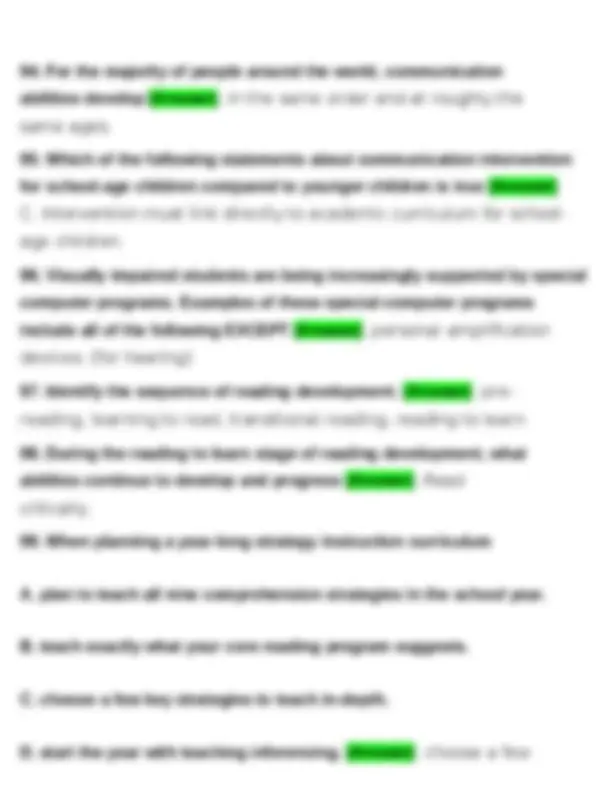

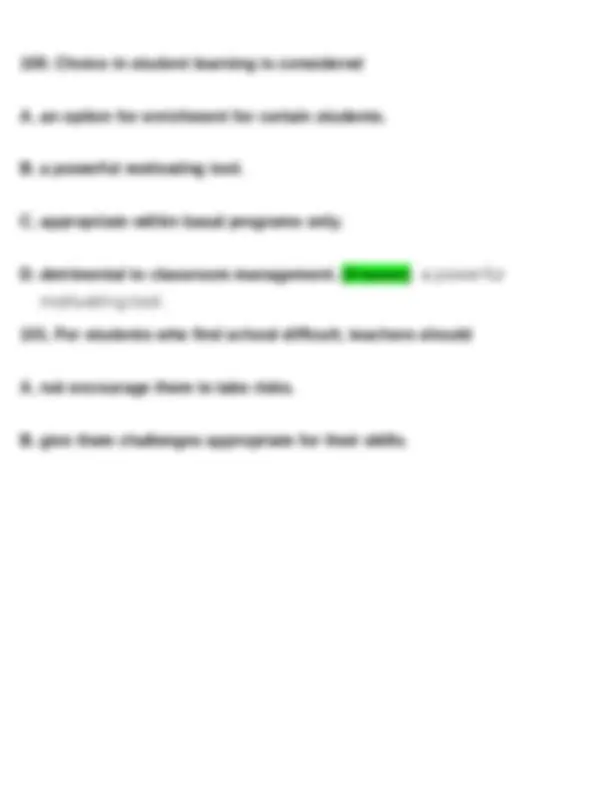
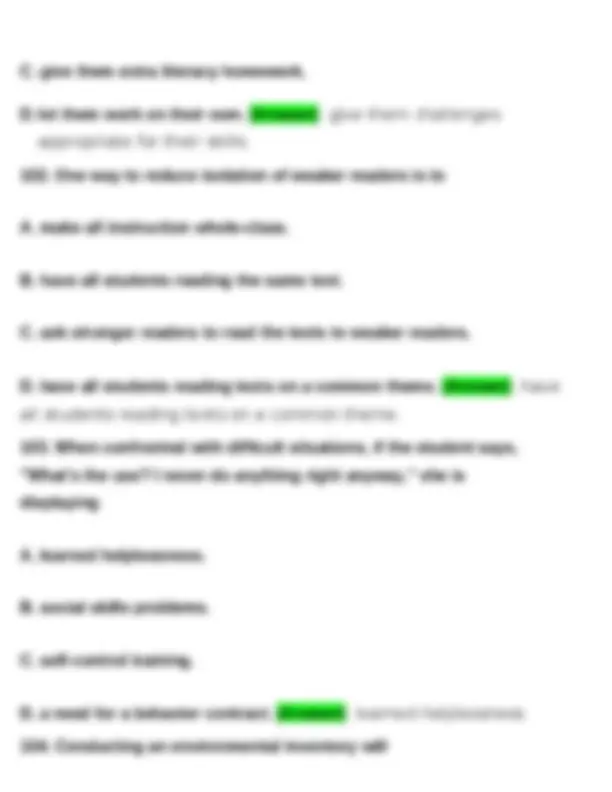
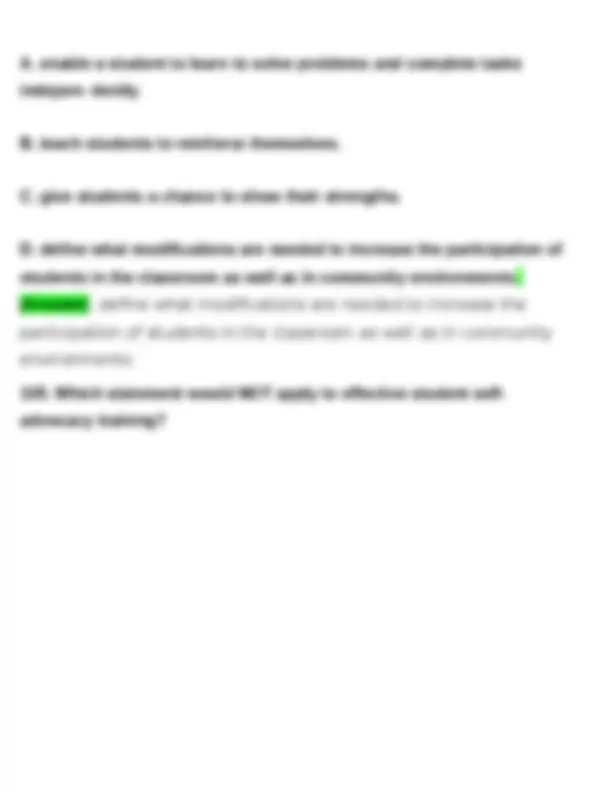
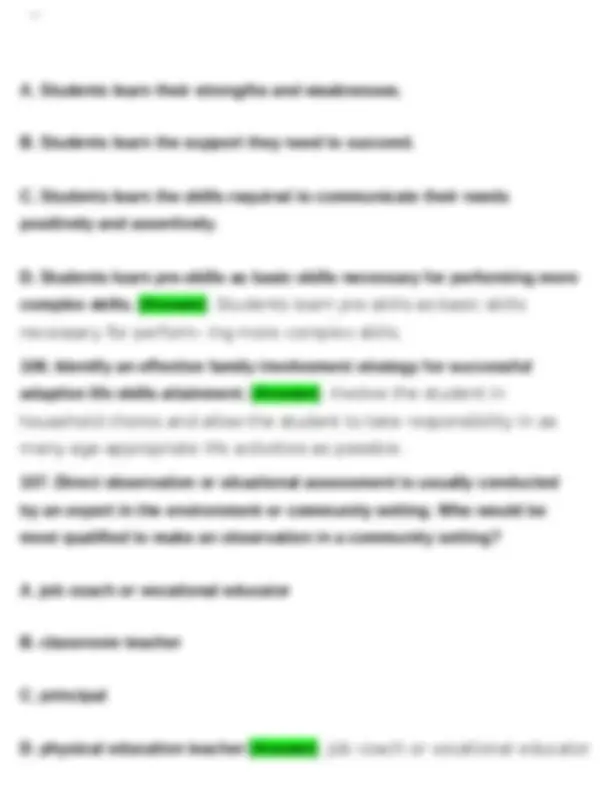
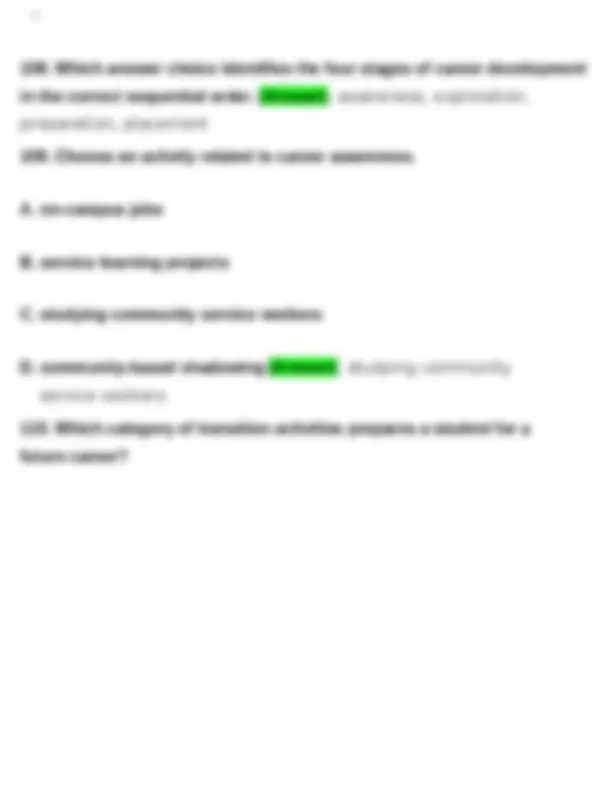
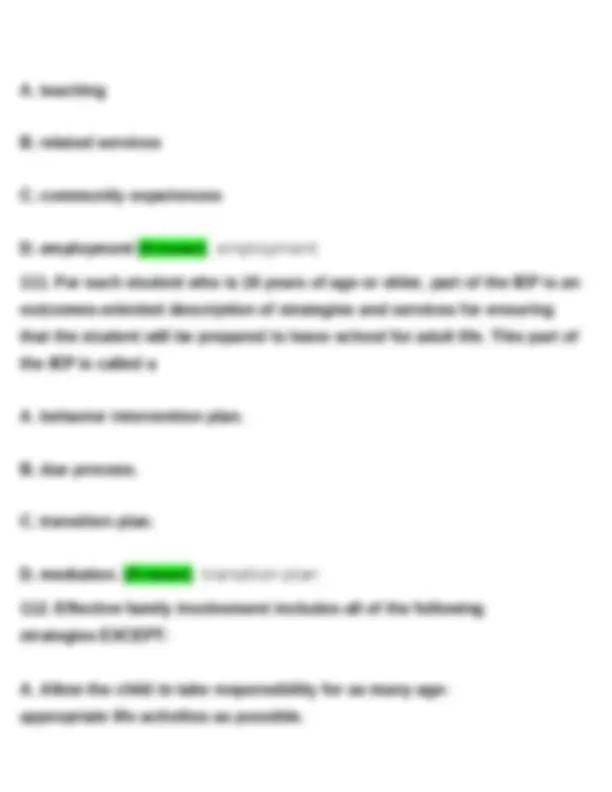
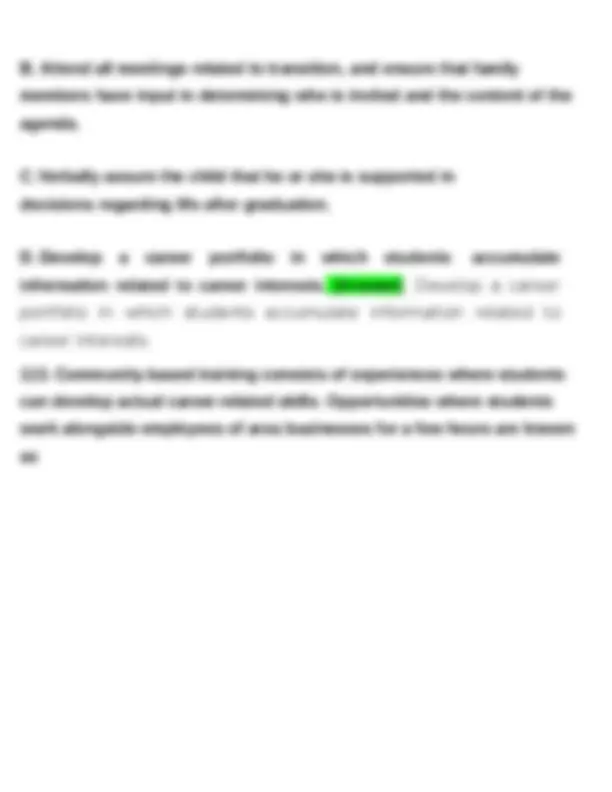
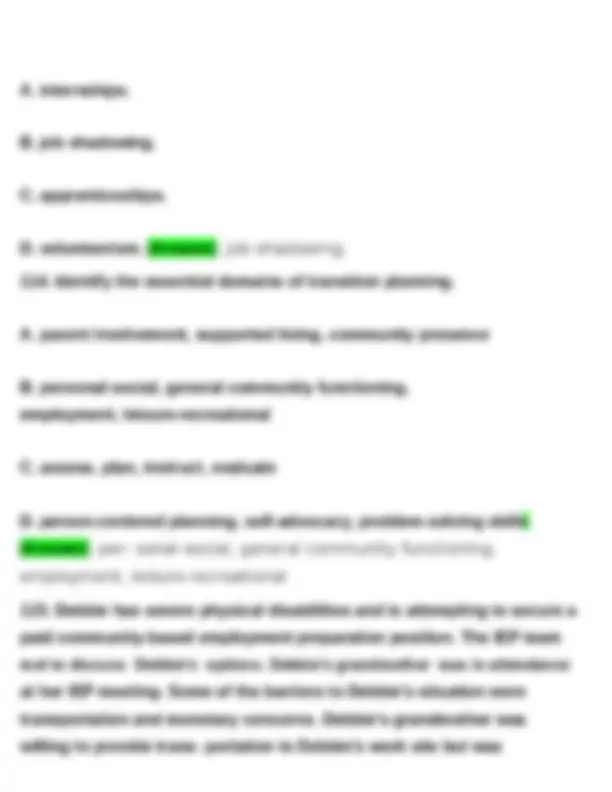

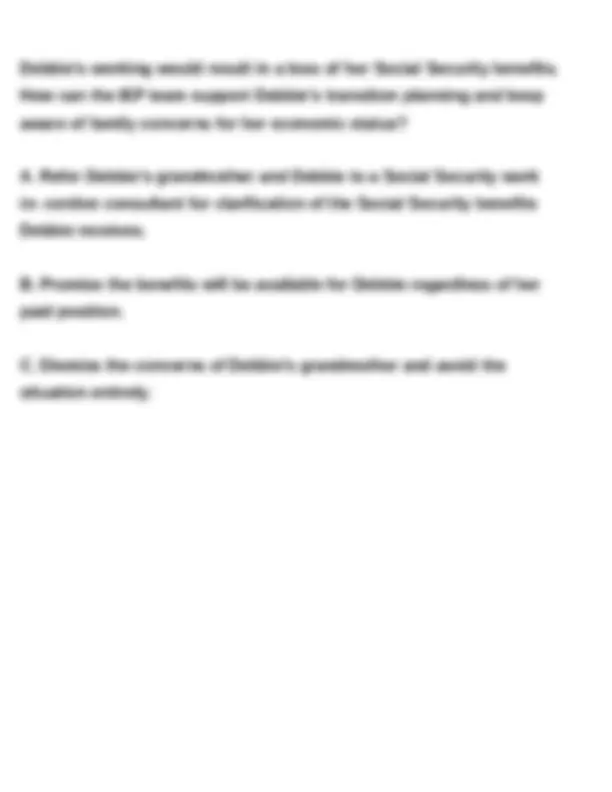

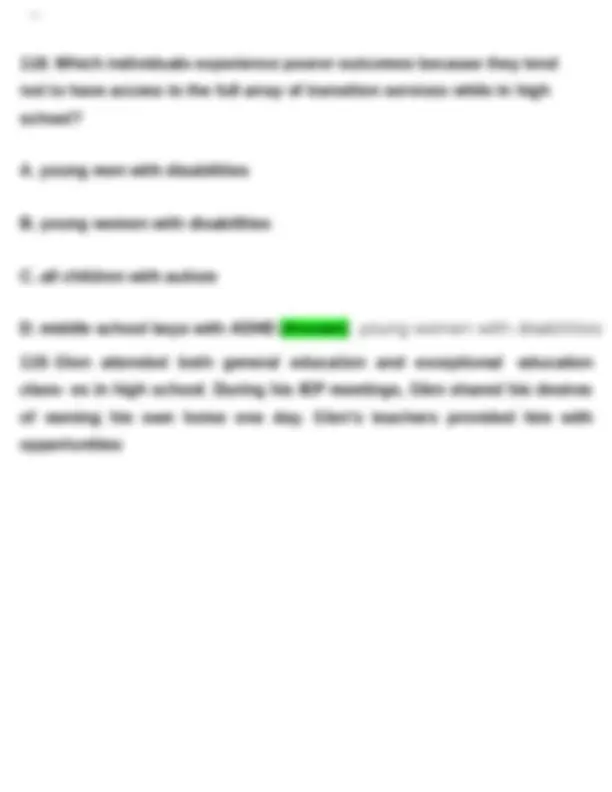
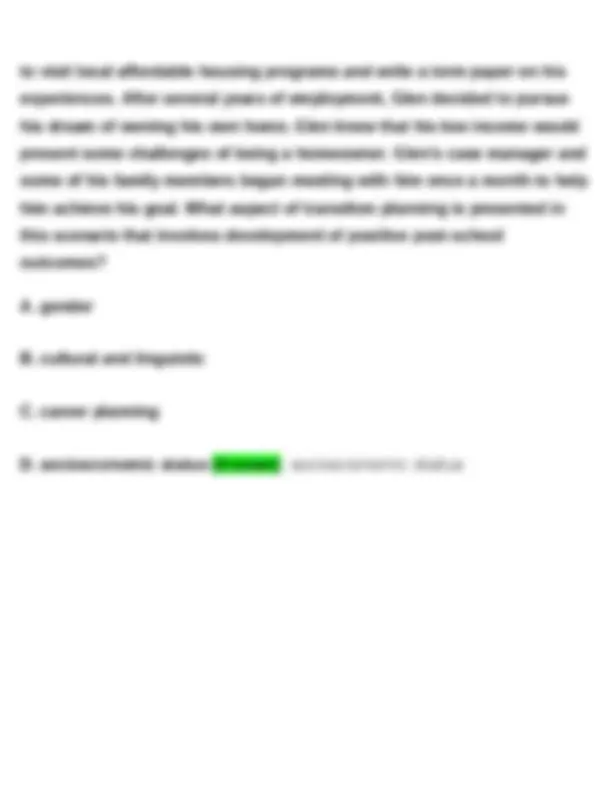


Study with the several resources on Docsity

Earn points by helping other students or get them with a premium plan


Prepare for your exams
Study with the several resources on Docsity

Earn points to download
Earn points by helping other students or get them with a premium plan
Community
Ask the community for help and clear up your study doubts
Discover the best universities in your country according to Docsity users
Free resources
Download our free guides on studying techniques, anxiety management strategies, and thesis advice from Docsity tutors
A list of questions and answers related to special education laws, practices, and strategies. It covers topics such as the Individuals with Disabilities Education Improvement Act, assessment procedures, instructional modifications, and behavior management. verified answers to each question, making it a useful study resource for students preparing for the FTCE ESE exam.
Typology: Exams
1 / 37

This page cannot be seen from the preview
Don't miss anything!






























1 /
best describes a responsibility of the paraeducator in this setting (Answer) A. assisting the students with learning disabilities during small-group instruction
equiv- alents and/or percentile ranks. (Answer). criterion- referenced
processes.
responds to Carmen's request by telling her the time. Using the example of
Carmen which of the interventions do you think will be the most effective (Answer) A. differential reinforcement